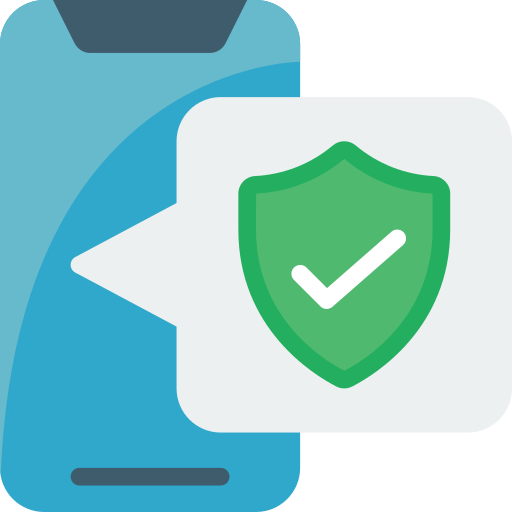
Risks to your personal data are never at a low in our modern society, where the potential of data collect and storage is at a constant high. With each website you access, not only can your activity be seen, but what you do afterwards also become available to companies. One method this happens through is with the use of device fingerprinting. This technique creates a fingerprint of your device by identifying and compiling a list of attributions such as IP address, time zone, language, VPN information, and much more. Still, device fingerprinting is one of many ways your data can be acquired with each web page you visit.

As soon as your data is leaked, you’re suddenly put at risk for financial loss, identity theft, and as a business, loss of sales, reputation, intentional attacks. When any company that keeps personal information experiences a data breach, sensitive information including social security numbers, bank information, or credit card numbers puts you at risk for identity theft. This signifies that your money can be stolen, new accounts can be opened under your name, and your cards can be accessed. Scary as it is, organizations are also equally vulnerable to targeted attacks to gain personal information. According to What Is a Data Breach and How to Prevent It?, there are four common types of cyberattacks: phishing attacks, malware attacks, vulnerability exploits, and denial-of-service (DoS) attacks. Phishing attacks use social engineering to steal sensitive information, typically starting from an email or SMS messages, malware attacks happen when a malicious link or attachment is opened, allowing the attacker to insert their code onto the device and access the credentials and information. Vulnerability exploits, also known as a zero-day attack is when the hackers creates problems in a company website and launches it before it can be fixed and denial-of-service attacks are an overload of fake requests and messages to a company with hopes to crash and or damage the website.

Having established this, we can continue by learning what prevention measures we can take to protect ourselves against data breaches, starting with our passwords. Using strong passwords is the key step to protecting the information you store online seeing as weak passwords are the most common causes of data breaches. To create one, use a minimum of 12 characters, a combination of symbols, numbers, uppercase, and lowercase letters. It’s also important to update your software when prompted and use only secure URLs, these will start with “https” and help prevent risky links and websites infesting your device. And lastly, for extra precautions, have your data backed up and ready to be recovered if the consequences of a data breach is to delete your data.
Computing resources are the tools that enable problem-solving and solution creation using the data received and stored. Knowing this, it’s also important to be aware of what computing resource uses are prohibited such as, distributing licensed or copyrighted material online. Copyright violators can be sued and have to pay the damage fees to the owner, additionally imprisonment could be a penalty to the violator. Other punishable acts include using the computer to access another person’s information, interfering with others' use of computing resources, and disguising your information and identity in any way. Some specific ways that retain prohibited activities using computing resources in college according to Western Piedmont Community College is sending inappropriate emails under the college’s address, using the college computing resource for commercial purposes without permission, or interfering with campus computing resources in any way.
Data misuse is when regulations, laws, and requirements are violated, resulting in information being used for something it was not intended for. An example of this took place in 2015, when one of Morgan Stanley’s financial advisors downloaded account data of one of their firm’s wealth management client and proceeded to upload a large number of account details online. Not only are data breaches costly to companies, but it’s also incredibly damaging to their reputation. An abundance of time, energy, and money is required to clean up the aftermath of data breaches, especially with big companies, on average the cost of a data breach is $4.88 million. Seeing as 95% of data breaches are financially motivated, it’s crucial to prioritize preventing data misuse and breaches.
The best way to protect your company is by knowing the proper practices to implement and protect your systems from any and all potential exploitation. Administering identity and access management through multi-factor authentication helps ensure only chosen personnel have access to sensitive data. In addition to technical solutions, you can also better educate workers and teams and set up behavior alerts to better guarantee data safety. By setting up behavior alerts, security will be alerted if any concerning actions take place, such as attempting to access restricted files, running prohibited applications, or a new login to the server. And lastly, talking to your teams, this means keeping them up to date and aware of data security, properly educating them on the consequences, why it’s so important, and even reviewing the company’s policies regarding data misuse from time to time.

Unauthorized access to information is often gained by hackers through methods such as phishing, ransomware, social engineering, and SQL injections. These cyber security threats exploit the vulnerabilities in software, or internet users directly all in order to gain access to sensitive information stored on personal, or company devices. Phishing uses fake emails or websites to trick users into revealing, or providing personal information that can be later used against them. These methods can give cybercriminals control over technological systems that'll later lead to more consequences.
The impacts and consequences of data breeches can range anywhere from identity theft and financial fraud to national security risks. All of this made possible by cyber attacks that gain sensitive information and proceed to sell them on the dark web or other illegal activities.
With this information in mind, cybersecurity measures to prevent unauthorized access to sensitive information is critical. This can include multi-factor authentication, also known as MFA, code encryption, and regular software updates. By properly protecting yourself against cyberattacks through these protective methods, you can ensure the safety of personal information.
Over time, computing innovations have shown to provide both new benefits and risks. On the positive side, there's been an increase in efficiency and productivity, medical advancements, data analysis, and even better education accessibility. However, this doesn't come without the consequences of an increase in privacy issues, cybersecurity threats, loss of jobs, and identity theft.
Through the use of artificial intelligence and automation reduce human effort and increases the accuracy of work. Additionally, cloud computing allows you to access data much faster, while creating a more convenient way of storing information. Not only this, but with the internet and social media, there's more connection across the globe than ever before.
Still, cybersecurity threats and privacy concerns are a very real reality part of the increase in technological advancements. Now that artificial intelligence is capable of creating images, videos, replicating voices, and so much more, risks of scams from deepfakes and misinformation is at an all time high. Furthermore, the energy consumption of data centers and the waste created by devices with short lifespans are still negatively impacting the enviorment.